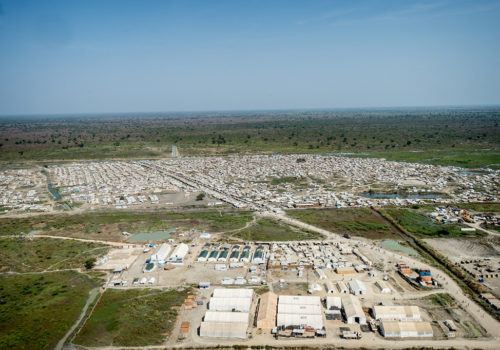The South-Sudanese humanitarian crisis is one of the worst on the planet at present, classified by UN “level 3” the same level of need as Syria; however the country ranks only among the‘top25’ in the interest list of the Intenational Community due to low commercial and strategic interests compared to the Ukrainian and Palestinian conflicts or the Ebola emergency. Notwithstanding this, the seriousness of the tragedy that is being consumed here has no easing.
December 2014 represents the first anniversary of the ongoing South-Sudanese civil conflict which sees the army loyal to President Salva Kiir, SPLA-Juba, opposing the army loyal to former deputy president Riek Machar, SPLA-IO. UNHR, the High Commission for Refugees of the United Nations, calculates that the conflict is generating more than 1,9 million of refugees who escape conflict areas such as Jongoley, Upper-Nile and Unity State. All of these strategically interesting because oil-rich.
In the area of Mingkman, nearly 100’000 Internally Displaced People (IDPs) fled to escape the uprising of the civil war which erupted a year ago. This is one of the most populated refugee settlements within South-Sudan.
The dry season is now approching and epidemic diseases such as cholera and malaria will calm down, hope health-worker Alex Jurua Simon of CCM, an Italian NGOs which has been working in the Lake and Warrap states for over 40 years.. However, explains an institutional source which prefers to stay anonymous, with the dry season the conflict is expected to erupt heavily once again .The peace agreement signed by the two parts a few weeks ago in Addis-Ababa are continuously transgressed by both parties.
International NGOs operates all over the war-torn country and support the work of UN and WPO (World Food Program) with projects that range from facilitating food distribution to basic health-care for both children and adults; however, it is the lack of basic supplies, such as fuel, that makes everyday life extremely though.
George Fominyen, spokeperson of WFP in Juba, explains that food stocks are not a major issue in South-Sudan but logistics are: more than 60 trucks, with a loading capacity of 45 metric tons each, pass every day through the gates of the warehouse in Juba. The extremely poor reliability of the roads network throughout the country and the drivers claims for more profitable salaries due to dangers and risks faced during the journeys are raising demands for founds. Fluvial transportation is currently implemented but is high risks; air-drops and air-deliveries are the only options when food has to be delivered to frontline, but they are seven time more expensive than trucks. Needs are high and time is short, food stocks have to be pre-positioned during the next four months of the dry season because when the rains will start again, South-Sudan will be impassable once again.
http://alessandrorota.photoshelter.com/
